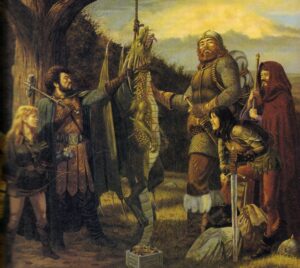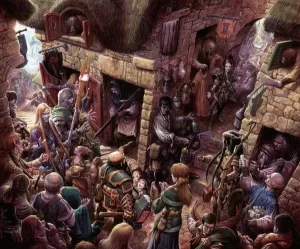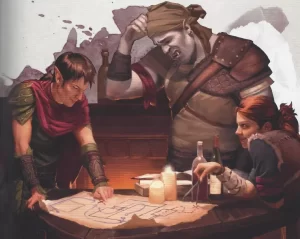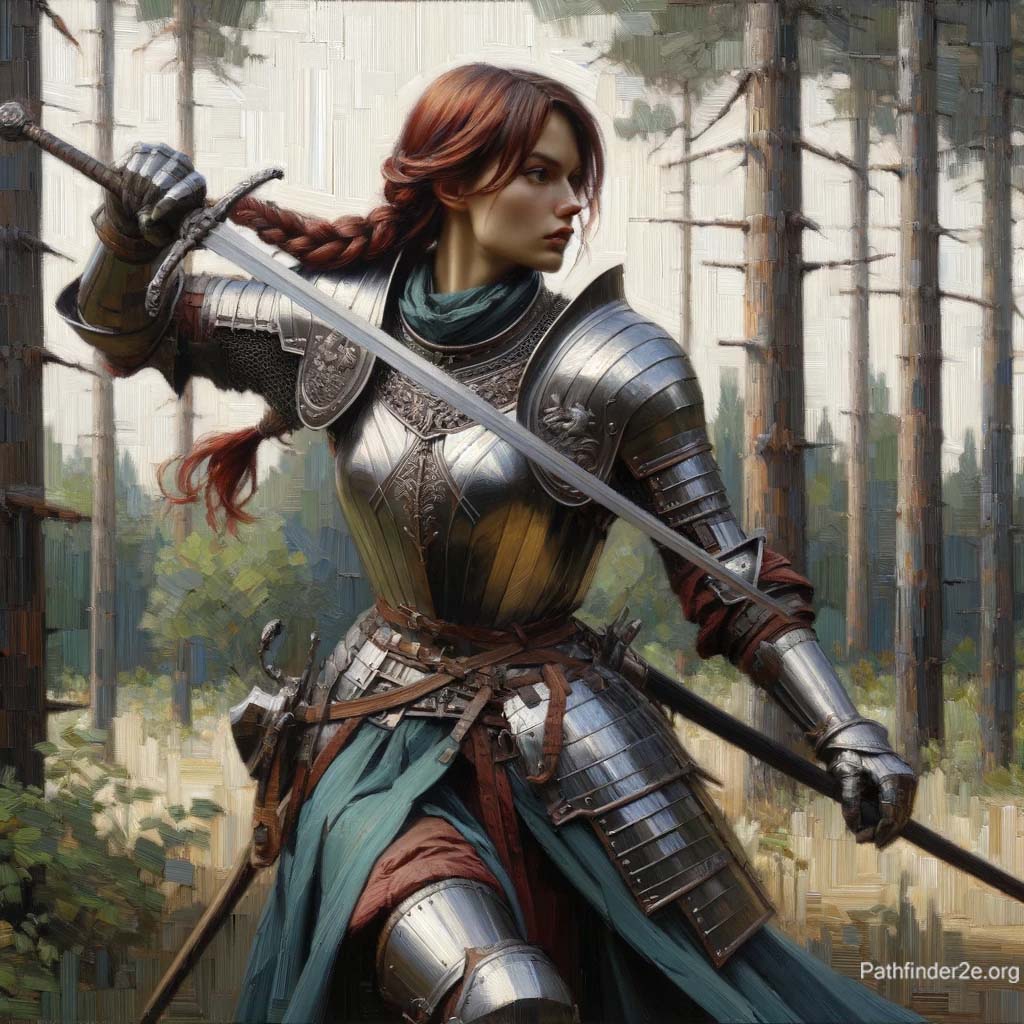
Loftier Echelons
The world of Wizards of the Coast has unearthed a reality that resonates with many adventurers and high level characters: The typical campaign often loses its spark after a fleeting six months, or around the time the party reaches the challenging ninth level. But here's a tantalizing thought - what if the lustrous allure of the 5th edition doesn't truly emerge until these loftier echelons? What if, especially for the seasoned players among us, commencing a campaign at the intriguing level eleven was not just a notion but an ideal path?
You see, the realm of 5th edition D&D is fraught with a perplexing scalability conundrum. As our intrepid heroes amass power, honing their abilities with a craftsman's precision, the very world around them reacts, the encounters scaling in intensity to match their newfound strength. But the plot thickens, for this power surge begins to wane, slowing to a mysterious crawl as characters ascend through the ranks.
Allow me to paint a picture with the vivid brushstrokes of a Human Fighter, a noble soul wielding Sword and Board, as we trace the sinuous path of durability and damage output across time. Imagine, if you will, the pulsing heartbeat of hit points, the lifeblood of our hero. With each new level, we can gauge the rhythmic swell of that heartbeat, measuring the percentage of increase relative to what once was.
Gaining
Upon the valiant reach to level two, a thunderous surge, nearly a 50% escalation in vitality, pulses through our fighter. By level three, they stand as a beacon of resilience, with twice the endurance they wielded at their journey's start. Yet, a shadow looms, for this crescendo in fortitude begins to fade, dwindling to a whisper as the fifth level is attained. The truth is stark, and it sings a sobering melody: Eight additional hit points lose their luster when seventy already blaze within.
In the grand tapestry of the game, this nuanced shift in vitality and power weaves a pattern that beckons us to explore and question. It challenges us to look beyond the apparent and delve into the intricate dance of leveling and scaling. It's an invitation, a call to the curious and the brave, to embrace the higher levels where the true magic of 5th edition might just be waiting to unfold.

The same can be said for this character's damage output across levels. Various class features and extra attacks increase damage output like crazy in the lower levels, especially the 50% jump in damage output at level five. But the third attack gained at level eleven only increases damage output by 25% compared to the level before. Even worse, after level six, damage output increases are basically nonexistent. These same diminishing power curves are found among most other classes as well.
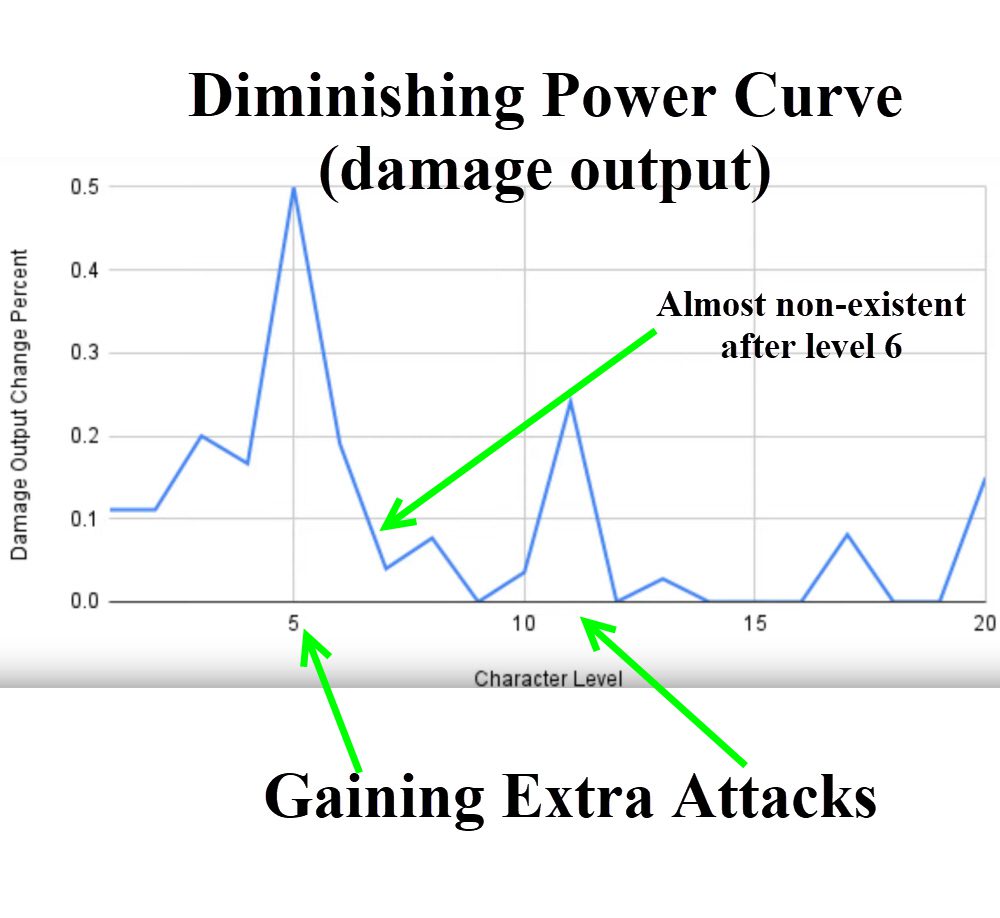
Sorcerers gain access to fireball and double cantrip damage upon level 5, but, after those fiery achievements, sorcerers begin working their way through some of the most lackluster fourth and fifth level spells in their list. Specifically, none of these new magic spells bring about the same excitement as a player did upon gaining access to fireball when achieving level five. In essence, when these characters gain more crunchy abilities that slow down combat, while also not gaining power at the same rate they remember doing so in prior levels, players generally become disinterested from the campaign.
Scaling Issue
This scaling issue also exists on the DM's end of the table, but it manifests in a very strange way. When crafting a game's central plot, and preparing its villains, we anticipate characters will rapidly grow in power. And, therefore, we create dungeons, villains, and encounters that reflect D&D's inherent character growth. But whereas the power level of a 7th level party isn't really that much different than an 11th level, it becomes problematic to design challenges that feel worthy of a technically higher level that these eleventh level character couldn't reasonably solve at level nine.
Even if we throw an Ilithilich or the Demogorgon at a level seven party, they still have tons of options to protect themselves long enough to escape. As a result, characters who grow up fighting goblins, then gnolls, then ogres, and finally slay an adult dragon, can't be overtly threatened anymore. At least not the same way characters felt threatened in early levels. But this is an opportunity, not just a problem.
Abilities and spell selections during mid-level advancement generally force players to make decisions that broaden their range of options. This contrasts with most early level advancements which make characters more skilled at a narrow, specific task. Sorcerers realize they can only take so many permutations of fire flinging, be it firebolt, burning hands, scorching ray, fireball, and finally wall of fire, before these spells become increasingly redundant.
As Characters Level Up
As characters level, they find themselves making more boring selections to their character's loadout. But these perceivably boring selections inadvertently increase a character's breadth of their problem-solving ability. So, if characters don't really gain more power output or durability, but instead gain abilities which help them respond to more unique threats in unique ways, but the slow grind of gaining those abilities is boring enough to become disinterested in the game - why not just throw more experienced players who won't be overwhelmed by it, straight into an 11th level campaign?
Characters will have enough options to handle, or at least retreat from, whatever challenges the dungeon master throws at them. This in turn, means encounter design, dungeon concepts, and storylines don't have to worry about those early level power jumps from second to third level, and again from fourth to fifth level. Not only this, but tinkerer players will finally have the opportunity to try some of their level 20 build ideas.
By starting the game at level eleven or so, your stories can get extremely wild, fantastical, and creative right from the start. And this solves yet another problem dungeon masters endure when it comes to game scalability.
We don't need to worry about the goblins or kobolds to have a convincing long-term story. The major threats in your game world's plot can immediately be interacted with in a meaningful way, without needing to worry through contrived low level monster story relevancy. Enemies no longer need to justify their cooperation with goblins or orcs, who are famously uncooperative, yet would be pressed into an extra dimensional being's service.
You can read about Summary of Character Classes in Dungeons and Dragons



